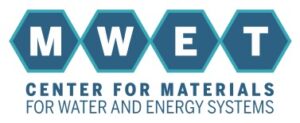ACS 2004 Conference
Philadelphia, Pa, 22 – 26th August
Abstracts of Attendees
Haiqing Lin’s Abstract
Reverse-selective, highly branched polymers for purification of hydrogen and other light gases
H. Lin, University of Texas at Austin
B. Freeman, University of Texas at Austin
L. Toy, Research Triangle Institute
V. Bondar, Research Triangle Institute
R. Gupta, Research Triangle Institute
S. Pas, CSIRO Manufacturing Science and Technology
A. Hill, CSIRO Manufacturing Science and Technology
Polymeric membranes are used in many applications, including gas separations, due to inherently low energy requirements for molecular scale separations. Hydrogen, a potential future energy source, is usually produced by steam reforming of hydrocarbons and requires removal of byproducts such as CO2 and H2S. Highly efficient membrane materials will be more permeable to large impurity molecules (e.g., CO2) than to H2 to produce purified H2 at high pressure; such behavior of reverse selectivity is opposite to that exhibited by the vast majority of polymers. Here, polar, rubbery, branched hydrogels photopolymerized from poly(ethylene glycol) diacrylate (PEGDA) and poly(ethylene glycol) methyl ether acrylate (PEGMEA) are shown to have outstanding performance for acid/polar gas removal from H2. Surprisingly, introduction of methyl ether chain ends (i.e., PEGMEA) markedly improves CO2/H2 selectivity from 19 to 40 and CO2 permeability from 6.6 to 52 Barrers at -20oC; these materials exhibit the best separation performance reported to date for solid non-facilitated transport membranes.

